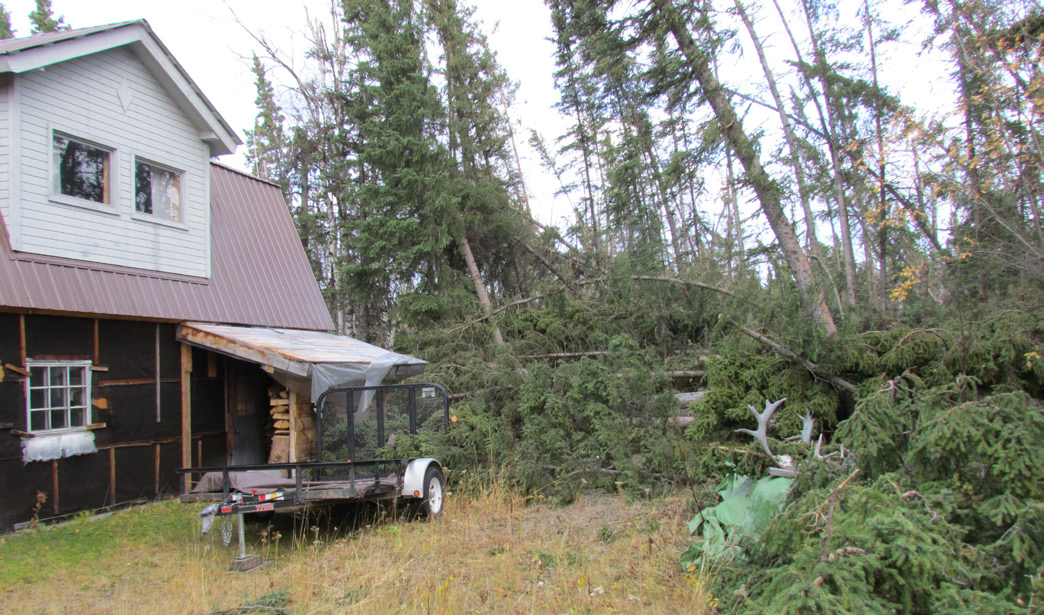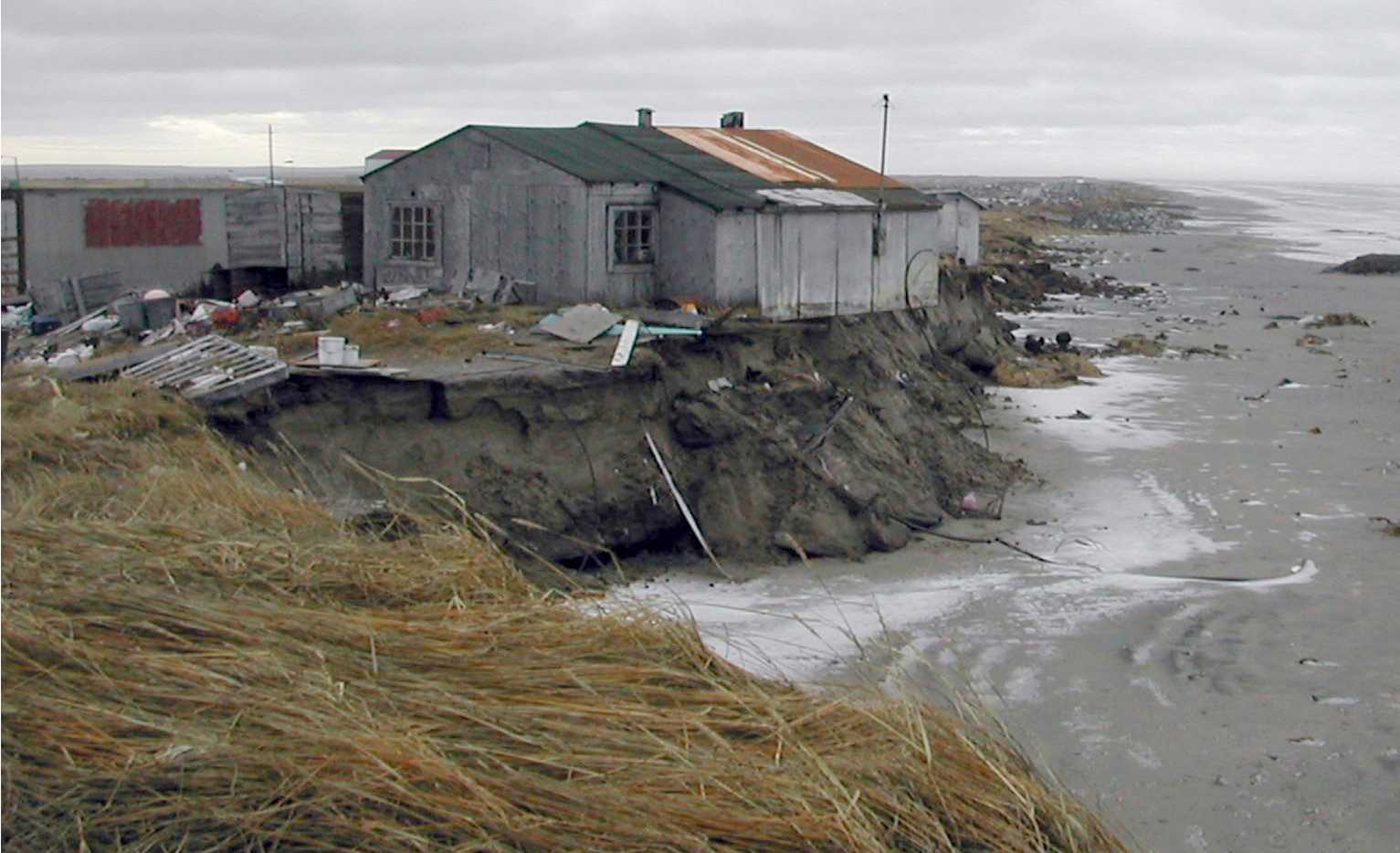Emergency Preparedness for Alaskans: Wind Events
SAL-00200 View this publication in PDF form to print or download.
Alaska is a land of beauty and wilderness, well-known for extremes, potential danger and hazards. Being alert and aware of inevitable weather-related emergencies enables citizens to be best prepared for these events. Climate is becoming more unpredictable, and extreme wind events are occurring more frequently around the state. Even if your house was not previously in a wind-prone region, that could change.
Basic emergency preparedness involves risk assessment, preventative measures and mitigation. Is your property in a wind-prone area? Topographical maps and local information may assist you in this determination. The Matanuska Valley, Delta Junction and other river valleys are known for significant winds, and Fairbanks has been experiencing more high winds that are wreaking havoc on power lines and causing power outages. Alaska is rarely affected by tornadoes, but thunderstorms may also result in high winds, and these are becoming more frequent. Straight-line winds — localized, powerful gusts of wind that come out of the base of a thunderstorm — and other localized wind events can cause damage similar to that caused by a tornado.
Alaska’s Aleutian Islands and western coastal areas are often exposed to significant fall and winter storms, with strong winds that may impact large areas of the state. These storms gather strength from large expanses of open ocean and may cause storm surges and flooding. Because the fall coastal ice pack forms later in Western Alaska with increasing warming in the north, there is no longer an ice buffer to protect the coast from erosion during fall and winter storms. As a result, whole villages are in danger and will have to be moved. Storm surges may also be caused by tsunamis, distant hurricanes or other weather events and can cause similar flooding. Tidal fluctuations can also impact the surge and flooding effects.

The National Oceanic and Atmospheric Administration (NOAA) is responsible for issuing storm and tsunami warnings and alerts, often from weather events thousands of miles away. Be alert to warnings during a projected storm or high wind warning. Often these wind events may be somewhat predictable because of existing weather patterns or conditions. Storm or high wind watches or warnings are usually sent out on commercial radio, television, local warning systems, weather stations or other sources. Some steps you can take to reduce property loss in a storm or high wind conditions:
- Trim or remove trees close to structures and secure outdoor items.
- Fasten straps or clips to building roofs to reduce damage.
- Use storm shutters or plywood for window protection.
- Make sure to secure or store any loose items on your property.
- Modify your landscaping to recommendations of the Firewise USA program.
Stay inside during high winds if possible to prevent injuries, and have sufficient emergency supplies on hand for at least 72 hours. Remember to plan for those with special needs as well as for pets. The Cooperative Extension Service publication SAL-00007, Emergency Preparedness for Alaskans, has an emergency supply checklist and lists items to include in a portable emergency kit to have on hand in the event of an evacuation.
High winds can result in power outages at any time of the year. Check for trees hanging over power lines adjacent to your property. If you see that there are trees that may come down on the power line, report by phone, website or your local electrical utility's phone app the location, date and time you found the problem. With some utilities you can monitor progress as they send someone out to inspect - or even cut down and remove offending trees. Do not attempt to remove trees around power lines. Although the electrical utility company will periodically come through and remove hazardous trees, it does not always get to the trees before they become a problem. Avoid downed power lines and report these to power companies or other emergency contacts.
Winter storms can be particularly dangerous, not only because of low temperatures but also because of blowing snow that may affect visibility. Blowing glacial silt, dust and other allergens associated with wind events can cause respiratory problems in children, seniors and others with health concerns. These individuals and others at risk may want to consider wearing dust masks or avoiding outdoor activities during high winds. Volcanic eruptions and wildfires can also cause localized wind and blowing ash concerns.

If evacuation is suggested or required, it is advisable to secure outdoor items and shut off utilities. It is also a good idea to have a contact list, a building evacuation map and a predetermined meeting place. Be sure to discuss and practice evacuation plans with your family. Evacuation routes are usually marked, but it is beneficial to be aware of these routes ahead of emergencies. While traveling, avoid canyons or steep, sloped terrain and other potentially flooded areas. As little as six inches of water may stall a car, and a foot of water will float many vehicles.
Local communities may offer additional resources and information for storms and wind events and other emergencies. Additional resources are also available from:
- AlaskaReady.Gov
- American Red Cross
- Department of Homeland Security-Federal
Emergency Management Agency (FEMA) - Extension Disaster Emergency Network (EDEN) National Oceanic Atmospheric Administration (NOAA)
Arthur Nash, Energy Specialist. Extension Energy Specialist. Originally prepared by Derylee Hecimovich, Extension Faculty, 4-H and Youth Development, and Valerie Barber, Extension Forest Resource Specialist
Reviewed March 2021
